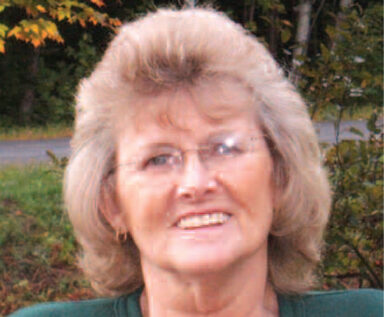Learning to Live with COPD
When Alice Dunkley was diagnosed with inherited chronic obstructive pulmonary disease (COPD), she was given less than five years to live. Twenty-six years later, this active grandmother continues to beat the odds.
- By Trudie Mitschang

ALICE DUNKLEY WAS only 36 when her family doctor discovered she’d lost 25 percent of her lung capacity and advised her to quit smoking right away. She complied, but five years later, she continued to suffer from shortness of breath and frequent respiratory infections. That’s when a blood test determined the root of the problem: Alice had alpha-1 antitrypsin deficiency (Alpha-1), a genetic form of chronic obstructive pulmonary disease (COPD). Her doctor said her prognosis was dire; she was advised not to waste time planning for retirement —it was unlikely she’d live that long. “I was devastated,” recalls Alice. “I went home and cried, and then I went into denial. But after about a week of feeling sorry for myself, I decided I either had two to five years to live, or two to five years to die. I decided to live.”
Understanding COPD
COPD is one of the most common lung diseases. It is debilitating and incurable; patients require pulmonary and oxygen therapy, plus multiple prescription medications to retain a reasonable quality of life. “I started on Prolastin therapy and took antibiotics early on when I was sick or had an exacerbation,” says Alice. “Eventually, I started using inhalers, and I also took prednisone and a mucus breaker.”
After about a year on Prolastin injections, Alice’s veins began to collapse. At that point, she had a port implanted in her chest to administer the medication, eventually learning to self-infuse, which she still does today.
In 1992, Alice took an early retirement under total disability. She spent two and a half years in pulmonary therapy that included education, exercise conditioning, breathing training and nutritional counseling. In time, Alice returned to her job part time, where she remained for 12-and-a-half more years. But, living with a rare disease often left Alice feeling very much alone. “My husband, Eugene, and I live in a very small town in upstate New York near the Adirondack Mountains,” says Alice. “During the first five years following my diagnosis, I never met with a pulmonologist and never spoke to another Alpha-1 patient. In 1993, we drove to Minneapolis to attend a national support meeting, and it was unbelievable to sit in a room with 300 other patients and caregivers. I didn’t feel alone anymore.”
From Patient to Advocate
Alice returned from that meeting invigorated and inspired. With her husband and daughter’s help, she founded a support group in her area, eventually pioneering meetings in Syracuse, Binghamton, Albany and Glen’s Falls, N.Y.
A self-described “tough mountain girl,” Alice has not only survived her hopeless prognosis, she has learned to thrive in spite of it. An active advocate for COPD awareness, Alice worked as a volunteer for the C.O.P.D. Information Line, where she eventually became a manager. “I have petitioned our governor for a COPD Awareness Month proclamation for the last three years, and have been active in the COPD Foundation, the Alpha-1 Association and the Alpha Net Foundation,” she says.
Alice believes the adage “knowledge is power,” and that the key to self-empowerment lies in helping others. “I tell patients to always keep a positive attitude — seek support from family, your medical team or other people with COPD, especially Alpha-1 because it’s so rare. But it doesn’t have to be a death sentence. I’m proof of that.”